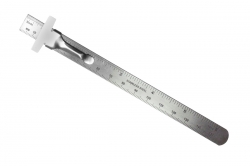5 ˝ (127 mm) plastic propeller for stupid combat 3 pieces

Customer line 9 am - 6 pm: +420 774 590 258 | Do you need help?
| Price in e-shop with VAT: | 26,17 € |
|
Stock
Tuesday 15.07. you can have it at the Nademlejnská central store Wednesday 16.07. it can be at your place |
|
|
|
Buy |
| Buy | |
Don't know how to choose? Are some parameters not clear to you? Write us your question and we will contact you with an answer.
Send a questionTwo school and training aircraft of deHavilland Canada DHC-1 Chipmunk founded just after the end of WWII. World War II a number of famous Canadian aircraft with animal names. In addition squirrels in aviation history came Beavers (Beaver), Otter (Otter and Twin Otter twin-engine), caribou reindeer (Caribou), Bison (Buffalo) ... Chipmunk served as a basic trainer aircraft not only in the Canadian Air Force (RCAF), but also in Parent British RAF and in many other countries. I also famous for one Super Chipmunk aerobatic version.
Kit free-flying semiscales Canadian trainer aircraft designed for drive by rubber. The model is simple but classic balsa construction in Rozsyp with předseknutými wooden parts, scale accessories from vacuum-molded plastic and plastic parts drawn by injection molding. Given that it is a very small - albeit simple - model, you should already have prior experience with classical building and test-flying models powered by rubber.
Fuselage structure consists of a pair of sidewalls connected předseknutých balsa wood balsa bulkheads supplemented shaped bulkheads and stringers allowing curves depict the actual machine. The wing is a classic design of ribs and beams, tail board are glued beams of balsa wood.
Chipmunk is also suitable for conversion to a miniature RC model with electric drive - although this construction plan of variants offer for experienced modelers and pilots would not be a big problem. For example, you can try to use the drive unit and onboard electronics of our Mini Bee.
Kit includes: předseknuté balsa parts, balsa wood beams, vacuum-molded parts (engine cover, canopy), a plastic propeller shaft and head, rubber volume, Machine cut Balsa wheels, steel strings on chassis and other small parts, paper coating, wet sheet of decals , building plan.
Tip for building: Předseknuté parts NEVYLAMUJTE! Turn the cutting board, place it on a work surface and lightly sand the fine sandpaper (No. 220 or finer). Parts can then be easily separated; should still have some wood fibers "bound" to a cutting board, carefully separate the part of the pattern, using a sharp knife (suitable as Excel No.1 knife with a blade 11).
Treatment of rubber volume: a new eraser gently wash it in soapy water and allow to dry. Then lubricate it with castor oil (sold in pharmacies) or silicone grease for the lubrication of fishing line (you get the fishing tackle shops). After flying with the volume model, remove and store it in a sealed plastic bag. Lubricated rubber volume depends more smoothly and with less friction - gives more power and last longer. The new volume is also advisable to first fetch - for the first 2-3 years only to turn the 80-100 revolutions before it can safely shoot more.
Size [mm] 432
Length [mm] 330
Controlled functions None
Building intensity of S1
Difficulty piloting P0
3 items



This website is using cookies
In order to improve our services, we use cookies on this website. For more information go to Terms and conditions for use of website.